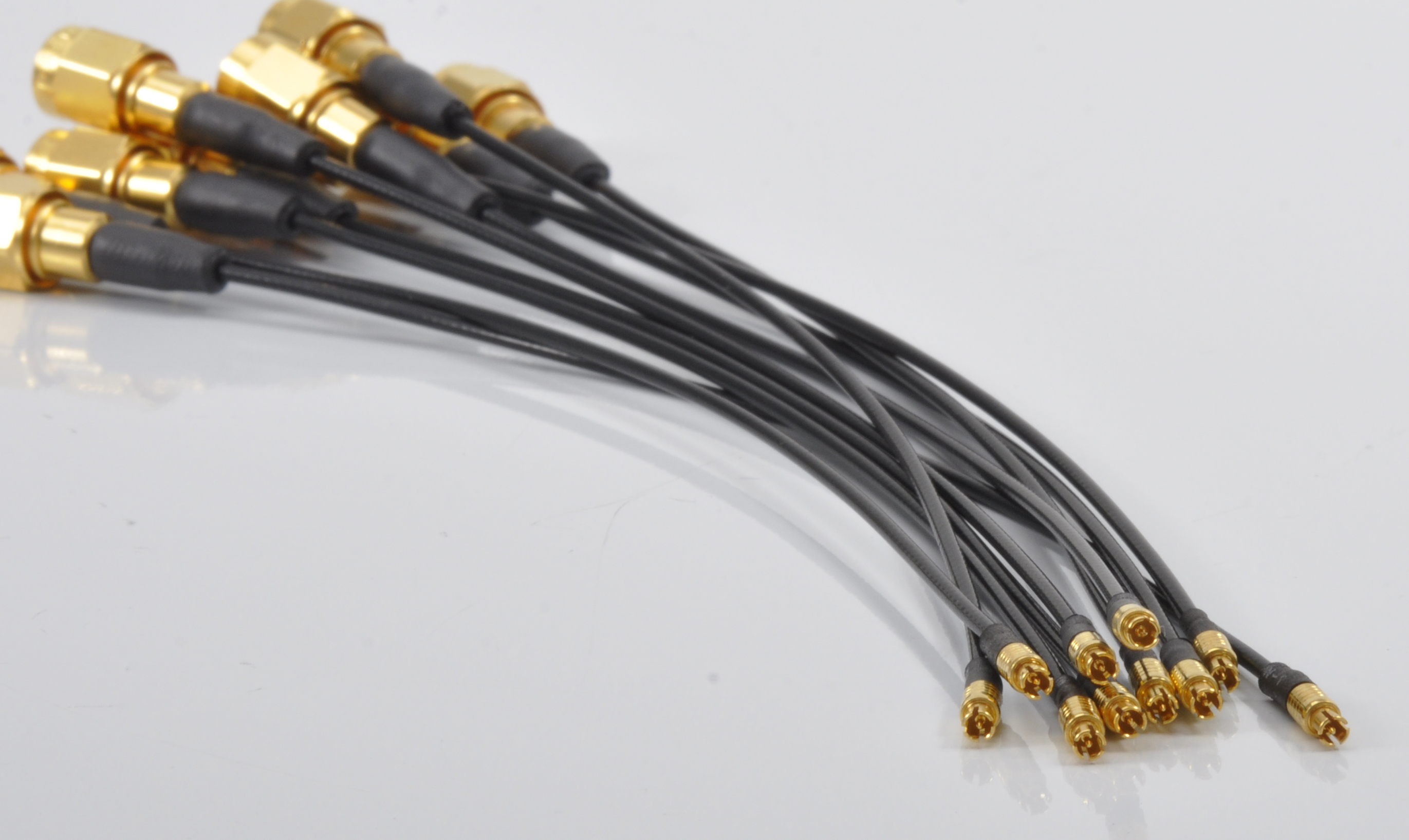Dieser Beitrag ist auch verfügbar auf:
![]() German
German ![]() French
French ![]() Spanish
Spanish
The cable sheath is the outermost protective layer of the coaxial cable and is usually made of one of many plastics. In the following overview you can find out more about the different sheath materials in our range.
FEP sheath:
FEP = Fluorinated Ethylene Propylene
Perfluoroethylene propylene, insulating material that has exceptionally good electrical, thermal, chemical and mechanical properties. Continuous temperatures of up to 205°C and application temperatures of up to minus 90°C are possible.
PE sheath:
PE = Polyethylene
Coaxial cables with a PE sheath are very tough and hardly absorb any moisture. Therefore, they are weather-resistant and suitable for outdoor use. PE also provides good electrical insulation.
PE is a thermoplastic and also the most commonly used dielectric material. It is also used foamed to improve the electrical values.
PTFE sheath:
PTFE = Polytetrafluorethylene
Also known under the brand name Teflon®, PTFE is solvent and temperature resistant up to 260°C, has the best electrical properties, but also high material costs. PTFE is a hard material and is used as a dielectric and cable sheath.
PUR sheath:
PUR = Polyurethane
This is a very weather-resistant insulating material. The halogen-free and self-extinguishing material has an application temperature range from -50°C to +85°C. Cables made of PUR have a very good resistance to UV light, chemicals and oil. Due to these properties, the cables are suitable for outdoor use as well as for moving applications.
PVC sheath:
PVC = Polyvinylchloride
PVC is a thermoplastic that achieves its flexibility with plasticisers. The medium-hard thermoplastic material is used in cables as a dielectric and for the cable sheath.
PVC is flammable and not halogen-free. The application temperatures are between -40°C and +70C.
Cables made of PVC can be used as indoor cables with moving applications, as the UV, chemical and oil resistance are good. However, they are not suitable as outdoor cables.
PFA sheath:
PFA = Perfluoralkoxy-Polymere
Further development of the widely used sintered material polytetrafluoroethylene (PTFE).
PFA has low strength and hardness. It is resistant to almost all chemicals, shows a very high temperature resistance (-200°C to +260°C) and is flame retardant (UL 94 V-0). PFA has a low coefficient of friction, largely inert behaviour, high sliding wear and extremely low adhesion. Cables made of PFA are also suitable for outdoor use.
FRNC/LSZH sheath:
LSZH from the engl. Low Smoke Zero Halogen
Unlike PVC cables, LSZH cables produce very little toxic fumes. This is why they are particularly suitable for indoor areas and are even a requirement in public areas, as burning PVC produces toxic fumes that can pose a risk to human health. LSZH coaxial cables are also used in poorly ventilated areas such as cars, aircraft, subways or ships. They are also known as FRNC by other manufacturers. Standard: IEC60332-1-2


